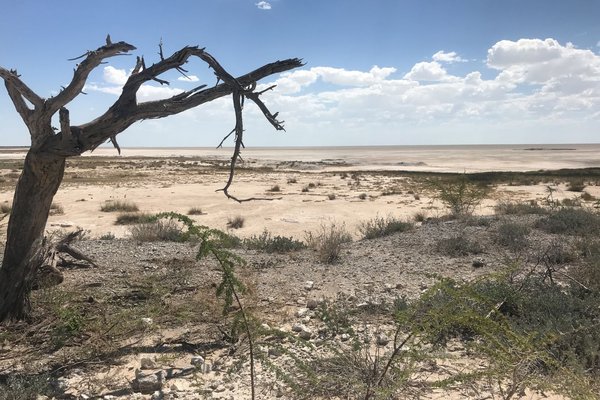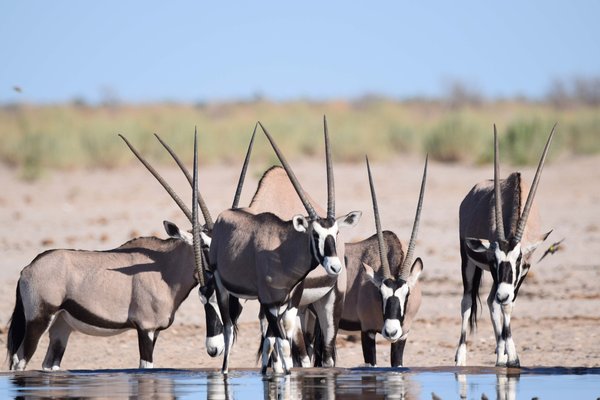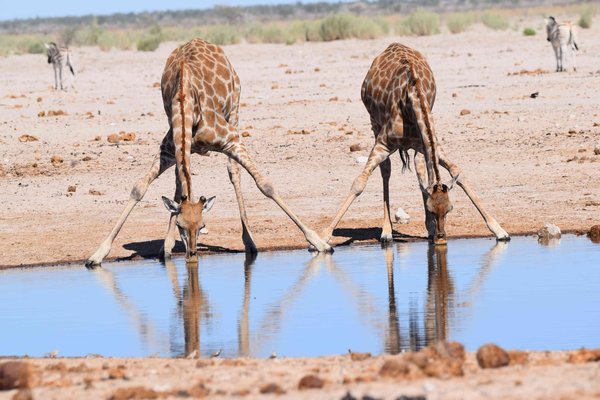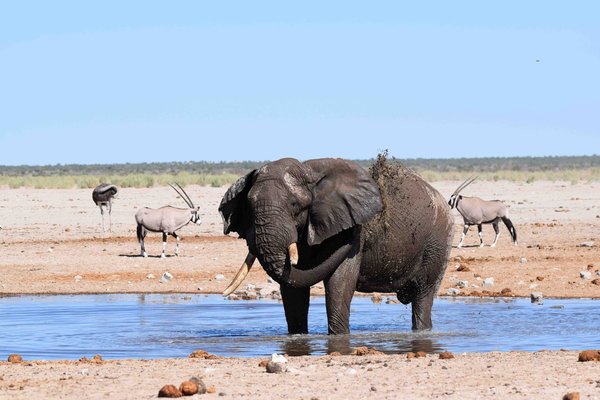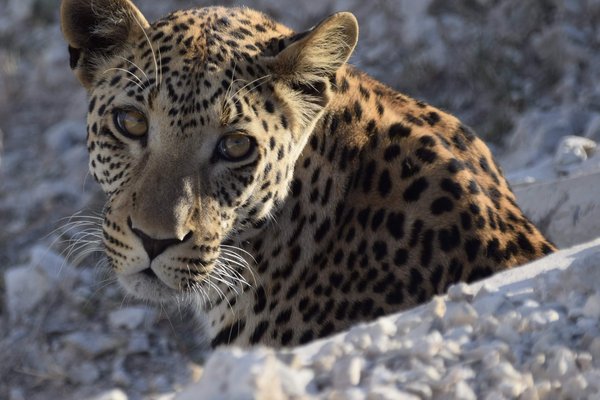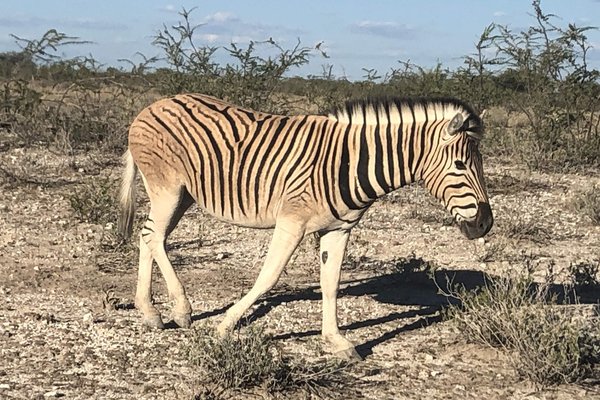Namibia
Etosha Pan
The Etosha Pan is an outstanding example of a superlatively sized salt pan that developed as a result of tectonic uplift that diverted river flow from maintaining a wetland in an endorheic basin.
Subsequent deflation by wind removed the unconsolidated sediments and exposed the saline basal clays of the basin, which is an ongoing process to this day. The 4730 km2 lake bed is mostly an uninhabited, salt-encrusted extreme desert that is only rarely flooded during exceptional wet periods.
Site Info
Official Information
- Full Name
- Etosha Pan (ID: 6095)
- Country
- Namibia
- Status
-
On tentative list 2016
Site history
History of Etosha Pan
- 2016: Added to Tentative List
- Added to tentative list
- Type
- Natural
- Criteria
Links
- UNESCO
- whc.unesco.org
All Links
UNESCO.org
- whc.unesco.org — whc.unesco.org
News Article
- Sept. 30, 2025 bbc.com — A fire that ravaged a third of a Namibia's Etosha National Park is "now contained"
Community Information
- Community Category
- Wildlife habitat: Fauna
Travel Information
Recent Connections
News
- bbc.com 09/30/2025
- A fire that ravaged a third of a N…
Recent Visitors
Visitors of Etosha Pan
- AC
- alicemears
- Ali Zingstra
- A. Mehmet Haksever
- Ammon Watkins
- bergecn
- Bernard Joseph Esposo Guerrero
- Bram de Bruin
- brornt
- Carlo Sarion
- Claire Bradshaw
- Csaba Nováczky
- Deffra
- Els Slots
- Erik Jelinek
- Geert Luiken
- Hammeel
- Jacob Otten
- Javier Coro
- Jean Lecaillon
- Jon Eshuijs
- Ludvan
- Maja
- Mariam
- MAURO PODDA PANI
- Michael Turtle
- MoPython
- Pieter Dijkshoorn
- Piotr Wasil
- Randi Thomsen
- Reiseblitz
- Reisedachs
- Sandra!
- Sergio Arjona
- Solivagant
- Stanislaw Warwas
- SteveD92
- Svein Elias
- Tamara Ratz
- Thomas Buechler
- Thomas van der Walt
- Timothy C Easton
- tony0001
- Vanessa Buechler
- Zizmondka
Community Reviews
Show full reviews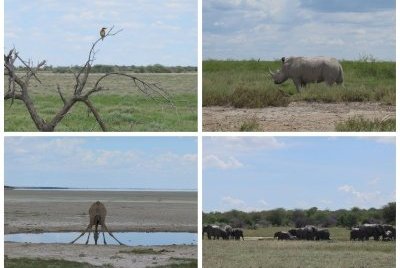
RHINO! Well, at the time I was so excited but since then I have seen many of them all over the world. My noobish question to the staff at the visitor center if they could give me hints of where there is a higher chance to run into them was just got me shaking heads. There is even a huge "DO NOT POST RHINO SIGHTINGS" in the logbook. Shortly after leaving the visitor center and veering off the main road I saw a huge boulder blocking the path - turned it out was a rhino after all. It didn't like the car coming but didn't run into the distance either. I also need to say that if you stick to the main road of the park you will not see too much and the smaller roads are rough. You can take most with an SVU but a 4x4 is recommended so you don't get stuck out there - pretty much Safari 101. As Etosha is a dry and hot park that makes it extra unbearable having to find help on foot.
Unlike most visitors I only spent a long day in the park so I didn't go far out in the distance. After having been to many national parks in southern Africa it can get a bit jading but if you come for the rhinos then you should stay longer to ensure sightings. Everything else, giraffes, elephants are pretty common all over the place and the lack of shades …
Keep reading 0 comments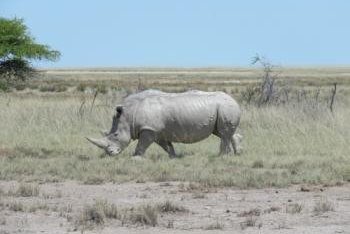
The Etosha Pan in northern Namibia is one of the world’s largest salt pans. It is a former lake bed of 4,730 square km. Nowadays the area is mostly a dry, saline and uninhabited desert. This combined with the high temperatures results in the fact that no flora or fauna to speak of can survive there. Only ostriches sometimes seek shelter here from predators. Vehicular traffic on the pan itself is forbidden.
On the fringes of the pan there are natural (and artificial) waterholes, grasses and shrublands that support high numbers of mammal and bird species. They are protected within the Etosha National Park, which with a founding date of 1907 is one of the oldest conservation sites in Africa.
The park has the largest single population of black rhino in the world. Numbers are nowadays undisclosed to prevent unwanted attention of poachers (drones are forbidden in the park for the same reason). But earlier numbers indicate about 600-750 black rhino living in Etosha. We saw about 10 of them. White rhino has been reintroduced here as well, but they are more rare. We were lucky to encounter one formidable individual at the edge of the pan, and follow him around for some 20 minutes. He took a long mud bath, so he was one big clay-ey, shiny mess. Afterwards he crossed the road close to our truck, and disappeared into the bushes – not before giving his nose/horn a long rub against a tree.
We spent 3 days in …
Keep reading 0 comments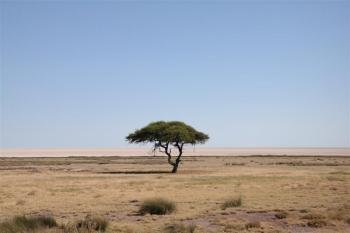
The Etosha pan is a huge salt pan (approx. 5.000 km2) and is part of Etosha National Park. Given the saline conditions, there are no (larger) animals to be spotted on the pan but they gather around a number of waterholes at the edge of the pan.
The pan itself cannot be visited, but there are a number of viewpoints where you can get a good overview of the pan. Having visited most of them, we found that the Salvadora waterhole (cf. picture) and Pan's Edge & Wolfsnes viewpoints offered the best views.
In general, a normal car will get you anywhere in the National Park, but for the more remote waterholes & viewpoints a 4x4 is recommended from a comfort point of view.
Keep reading 0 comments
